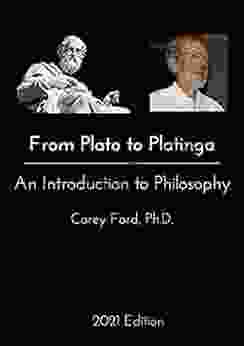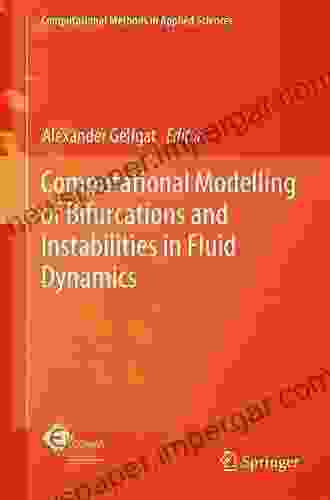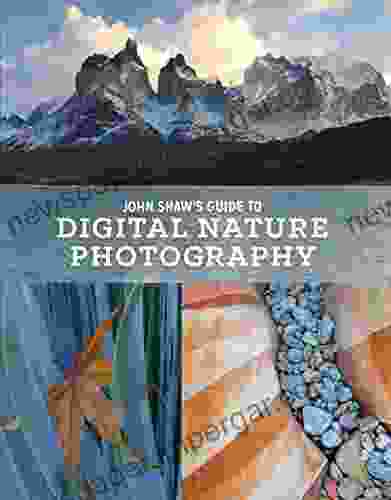Computational Modelling of Bifurcations and Instabilities in Fluid Dynamics: Unraveling the Complexities of Fluidic Phenomena

Fluid dynamics, the study of the behavior of fluids in motion, is a vast and captivating field that has profound implications in a myriad of scientific and engineering disciplines. From the intricate patterns of fluid flow in blood vessels to the thunderous roar of a jet engine, the understanding and modeling of fluidic phenomena are essential for advancing our knowledge and technological capabilities. Among the most intriguing and challenging aspects of fluid dynamics are bifurcations and instabilities, where the seemingly smooth and predictable behavior of fluids transitions into chaotic and unpredictable patterns. This article delves into the realm of computational modelling of bifurcations and instabilities in fluid dynamics, exploring the latest advancements and their significance in unraveling the complexities of these mesmerizing phenomena.
The Nature of Bifurcations and Instabilities in Fluid Dynamics
Bifurcations and instabilities in fluid dynamics arise when a system's behavior becomes highly sensitive to small changes in its parameters. These changes can trigger abrupt transitions from one flow pattern to another, resulting in drastic alterations in the system's behavior. Bifurcations and instabilities can manifest in a variety of forms, including:
5 out of 5
| Language | : | English |
| File size | : | 70420 KB |
| Text-to-Speech | : | Enabled |
| Screen Reader | : | Supported |
| Enhanced typesetting | : | Enabled |
| Print length | : | 850 pages |
- Saddle-node bifurcation: Two steady states collide and annihilate each other.
- Hopf bifurcation: A steady state becomes unstable, giving rise to a limit cycle.
- Pitchfork bifurcation: A steady state becomes unstable, creating two new stable steady states.
- Transcritical bifurcation: One steady state becomes unstable while another stable steady state emerges.
The study of bifurcations and instabilities is crucial for understanding the often-chaotic behavior of fluids in motion. By identifying and characterizing these phenomena, scientists and engineers can gain valuable insights into the dynamics of fluid systems and predict their behavior under various conditions.
The Role of Computational Modelling
Computational modelling plays a pivotal role in the study of bifurcations and instabilities in fluid dynamics. The complexity of these phenomena makes it challenging to analyze them solely through theoretical or experimental approaches. Computational models, however, allow researchers to simulate fluid flow and examine its behavior under controlled conditions, enabling them to isolate and study specific aspects of bifurcations and instabilities.
Computational models can capture the intricate interactions between different fluid properties, such as velocity, pressure, and temperature, and accurately predict the system's response to varying parameters. This capability enables researchers to explore a vast range of scenarios and investigate the influence of different factors on the occurrence and characteristics of bifurcations and instabilities.
Furthermore, computational models can be integrated with advanced visualization techniques to create stunning graphical representations of fluid flow patterns. These visualizations provide intuitive insights into the dynamics of the system and facilitate the identification of complex phenomena that may not be readily apparent from numerical data alone.
Applications of Computational Modelling
Computational modelling of bifurcations and instabilities in fluid dynamics has a wide range of applications across various scientific and engineering fields, including:
- Aerodynamics: Optimizing aircraft designs by analyzing airflow patterns and predicting the onset of aerodynamic instabilities.
- Hydrodynamics: Studying the behavior of fluids in ship hulls, pipelines, and other marine structures.
- Biofluid mechanics: Understanding blood flow patterns in arteries and veins and predicting the risk of thrombosis.
- Astrophysics: Simulating the dynamics of plasmas in stars and galaxies.
- Materials science: Predicting the behavior of fluids in microfluidic devices and nano-scale systems.
By leveraging computational modelling, researchers can gain valuable insights into the complex dynamics of fluidic phenomena and develop innovative solutions to real-world problems.
Current Advancements and Future Directions
The field of computational modelling of bifurcations and instabilities in fluid dynamics is constantly evolving, with researchers exploring new techniques and developing more sophisticated models. Current advancements include:
- High-fidelity simulations: Advances in computational power and numerical methods enable the simulation of increasingly complex fluid flows with更高的 fidelity.
- Multi-scale modelling: Coupling models at different scales allows researchers to investigate phenomena spanning multiple length scales.
- Machine learning and artificial intelligence (AI): AI techniques are being used to enhance model accuracy, identify patterns, and accelerate simulations.
Future directions in computational modelling of bifurcations and instabilities in fluid dynamics include:
- Turbulence modelling: Developing more accurate and efficient models for simulating turbulent flows.
- Nonlinear dynamics: Exploring the interplay between bifurcations, instabilities, and nonlinear phenomena.
- Fluid-structure interaction: Modelling the coupled behavior of fluids and
5 out of 5
| Language | : | English |
| File size | : | 70420 KB |
| Text-to-Speech | : | Enabled |
| Screen Reader | : | Supported |
| Enhanced typesetting | : | Enabled |
| Print length | : | 850 pages |
Do you want to contribute by writing guest posts on this blog?
Please contact us and send us a resume of previous articles that you have written.
 Book
Book Novel
Novel Page
Page Chapter
Chapter Text
Text Story
Story Genre
Genre Reader
Reader Library
Library Paperback
Paperback E-book
E-book Magazine
Magazine Newspaper
Newspaper Paragraph
Paragraph Sentence
Sentence Bookmark
Bookmark Shelf
Shelf Glossary
Glossary Bibliography
Bibliography Foreword
Foreword Preface
Preface Synopsis
Synopsis Annotation
Annotation Footnote
Footnote Manuscript
Manuscript Scroll
Scroll Codex
Codex Tome
Tome Bestseller
Bestseller Classics
Classics Library card
Library card Narrative
Narrative Biography
Biography Autobiography
Autobiography Memoir
Memoir Reference
Reference Encyclopedia
Encyclopedia John Stonebraker
John Stonebraker John Scott
John Scott Jonathan J Shuster
Jonathan J Shuster John Killen
John Killen John Kelly
John Kelly John W Moffat
John W Moffat Joi Miner
Joi Miner Jonathan Higgins
Jonathan Higgins Jonathan Tim
Jonathan Tim John Toland
John Toland Johnny Molloy
Johnny Molloy John L Fan
John L Fan John Hartley
John Hartley John Smiley
John Smiley John Flavel
John Flavel John H Lienhard
John H Lienhard John Chambers
John Chambers John Sheen
John Sheen John T Moore
John T Moore John Milward
John Milward
Light bulbAdvertise smarter! Our strategic ad space ensures maximum exposure. Reserve your spot today!
 Isaac AsimovFollow ·9.2k
Isaac AsimovFollow ·9.2k Harry HayesFollow ·12.4k
Harry HayesFollow ·12.4k Gene SimmonsFollow ·12.6k
Gene SimmonsFollow ·12.6k Jarrett BlairFollow ·19.7k
Jarrett BlairFollow ·19.7k Virginia WoolfFollow ·5.6k
Virginia WoolfFollow ·5.6k Clayton HayesFollow ·19.3k
Clayton HayesFollow ·19.3k Cameron ReedFollow ·16.8k
Cameron ReedFollow ·16.8k Branden SimmonsFollow ·10.2k
Branden SimmonsFollow ·10.2k

 Jake Powell
Jake PowellThe Constitution of the State of Colorado: A Legacy of...
Since its adoption in 1876, the...

 Devin Ross
Devin RossFrom Plato to Plantinga: A Journey Through the History of...
Philosophy is the study of...

 Robin Powell
Robin PowellWords That Hurt, Words That Heal: The Power of Language...
Words are powerful. They can...

 T.S. Eliot
T.S. EliotTantalize Your Taste Buds with Over 90 Low-Carb Ethnic...
Indulge in a Culinary Adventure with "Over...
5 out of 5
| Language | : | English |
| File size | : | 70420 KB |
| Text-to-Speech | : | Enabled |
| Screen Reader | : | Supported |
| Enhanced typesetting | : | Enabled |
| Print length | : | 850 pages |
















